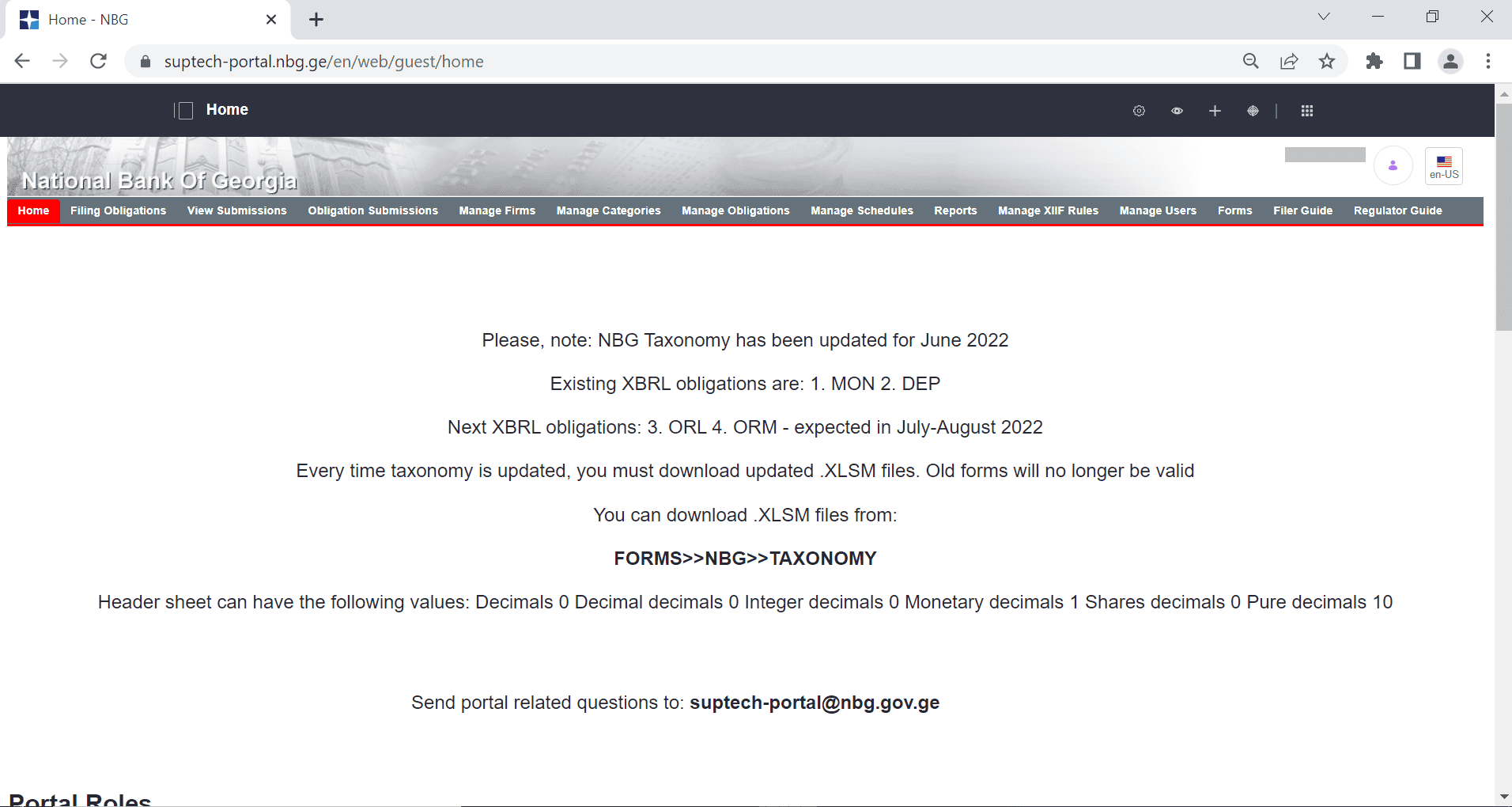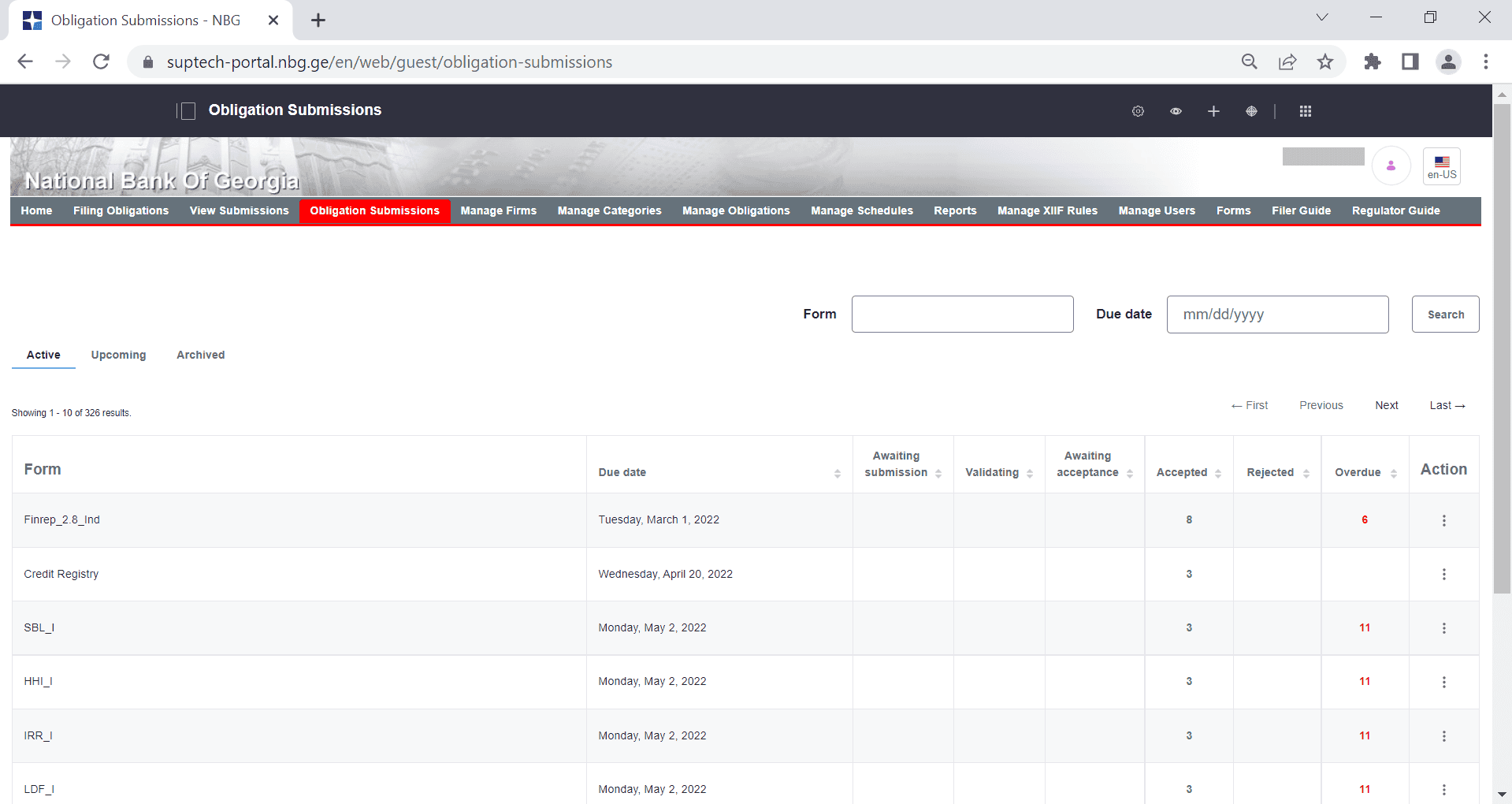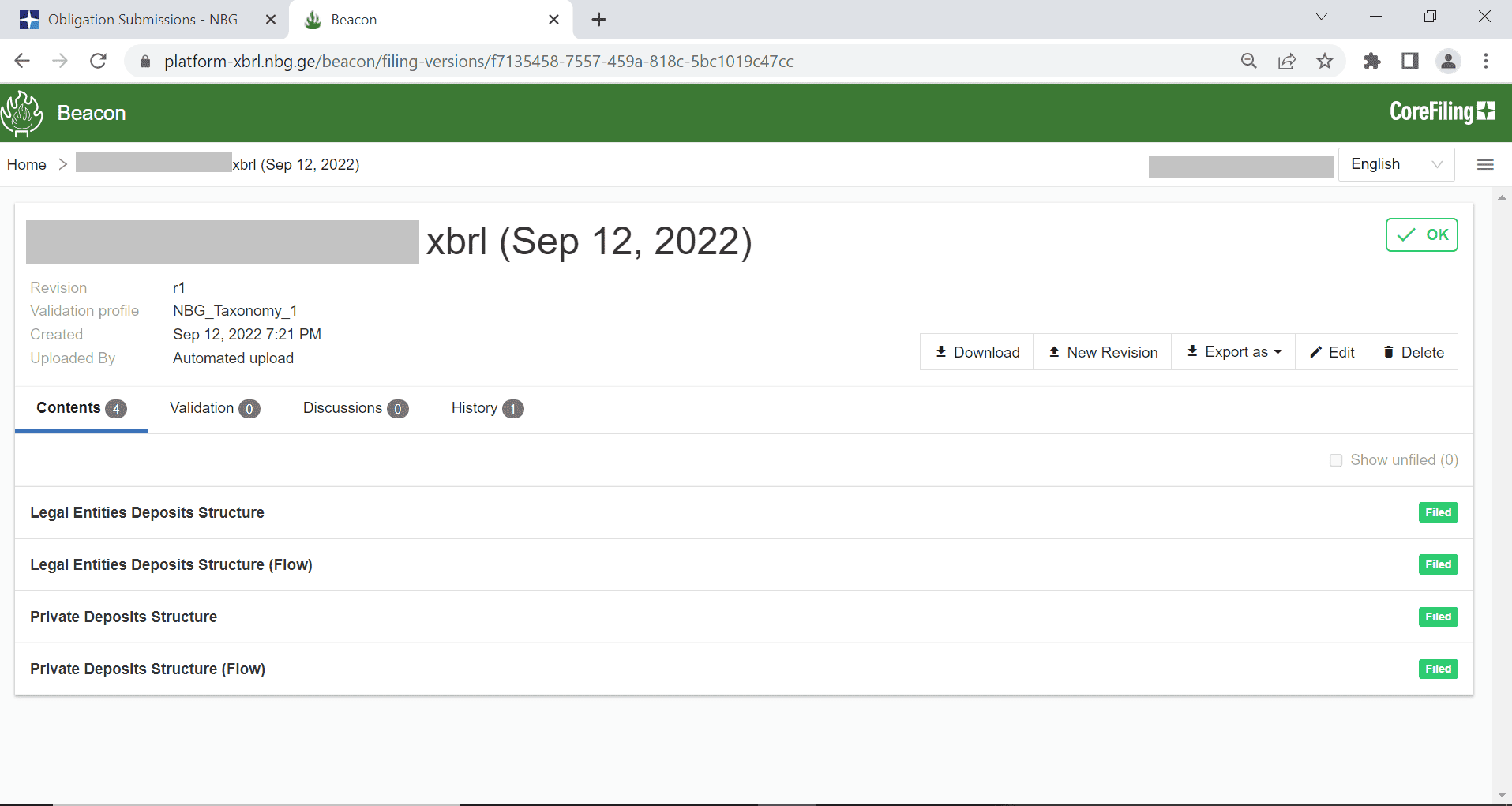This is a case study for a data collection modernisation project run by the National Bank of Georgia (“the Bank”). Georgia wishes to accede to the European Union and this project was partly driven by a desire to harmonise with European best regulatory banking practice.
Background
The Bank uses data, collected from financial institutions (FIs), as part of their national financial supervision framework. Prior to the project, regulatory data collection was carried out using a spreadsheet through multiple secure channels to communicate and exchange data between supervisors and FIs. Once data was received, a VBA driven workflow was used to check and process the data into fixed reports and analysis spreadsheets for use by the supervisors.
The Data Processing department were able to ensure the supervisors had the data they needed. However, they were required to maintain and run a complex and challenging process to source, review and present the data correctly. In particular, spreadsheets needed frequent and detailed attention from the team to verify and move the data. The Data Processing team were also aware that an upcoming transition from local GAAP to IFRS would mean that all the existing workflows would have been manually modified or re-created. They decided that a more structured process, underpinned by XBRL technology, would ensure FIs can submit, and supervisors receive, the data they need with a more efficient process.
The solution
Through a competitive RFP process, CoreFiling’s True North data platform (TNDP) and Professional Services team was selected to deliver the XBRL Information System project for the collection of regulatory information. The solution handled the three main challenges involved:
- taxonomy management to define the data to be reported, including the transition to IFRS;
- a data collection portal to run the collection programme; and
- data processing to validate incoming data and process it ready for analysis.
To define regulatory reports, the Bank decided to use the EBA’s CRD IV XBRL taxonomy as the basis for their regulatory data model. A combination of taxonomy authoring services and self-service software were used to build on the EU framework to create a taxonomy specific to the Bank. The specialist skills and knowledge of the CoreFiling team helped the Bank move through the process of building a new standards-compliant taxonomy that met the business goals.
The solution retains features that supervisors liked in the existing process. For example, the ability to draw out forms in an Excel sheet. By adopting the “Eurofiling” style of laying out reports (including row and column labels, for example) the Bank’s subject matter experts can directly participate in defining the data model.
The submission portal was installed on site and configured to accept regulatory submissions from authorised financial institutions. Structured data reports can be submitted in XBRL or in Excel formats. Excel forms are automatically generated from the taxonomy and the data is automatically transformed to XBRL upon submission. The solution also supports XML submissions and ad-hoc reports in other formats such as PDF.
The portal is used to communicate reporting obligations and data between the Bank and financial institutions. It also allows management of reporting obligations on the individual firm level by their nominated supervisors. Users in the Bank and the FIs are set up with different roles to reflect the diversity of reports and the business process on either side.
Upon filing, submitted reports are automatically validated against the submission date, file name, file format and/or taxonomy, and any business rules. Filers can view results immediately in the portal. Valid returns are processed into databases for downstream analytical use and made available to supervisors, based on their role.
Home screen notifications to FIs

Viewing the submissions summary

Opening a submission in the integrated viewer

The outcome
The new system processed its first live filings on March 2021. The transition was eased by ensuring that changes to business stakeholders were minimised while also completely transforming the management of the data.
The project was set up as an XBRL project but delivered more than this. Each stakeholder now benefits from joined-up software and a clearly defined process that helps them manage and control their part of the data collection programme.
Some of the tangible benefits of the new solution are:
- Ready for change: The Bank was able to replace several forms with XBRL-based forms backed by taxonomies. FIs could upload XBRL-backed Excel spreadsheets to be converted to valid XBRL filings by the portal. This makes it easier for FIs to use the portal while they look to create new workflows that generate XBRL files direct from their core system. The XBRL-backed Excel forms enforce a common structure which eases the transition for FIs into IFRS. By providing consistency in the process and form design, they can focus solely on the data required.
- Improvements in data quality: Data quality was improved by immediate validation of incoming data with direct feedback to financial institutions. This was particularly welcomed by FI administrators who are now able to find and fix data issues without involving supervisors.
- Better communications: The portal is shared by FIs and the Bank, meaning that communications and activities related to data collection on both sides have become easier. For example, the portal can be used to check and control a firm’s reporting deadlines, give in-portal announcements, and to share ad hoc reports, removing the complexity of using direct email for these tasks.
- Improved data management: The management of data access on both sides has been improved, meaning that it is easy to make sure the correct people see data for their forms and firms. The user management roles and capabilities also better match the roles inside the FIs acting to reduce the filing burden.
- Streamlined end-to-end process: Manual steps in the data management and processing have been replaced by a streamlined, automated process to reduce the burden on the Bank’s IT and Data Processing teams.
- Access useful information: The portal gives FIs the information they need in one place. Up-to-date forms and taxonomies can be identified and downloaded for each reporting period leaving no question about which is the latest. They can also access a record of their own filing and validation activity adding extra comfort to management of external reporting.
“The new CoreFiling TNDP solution will allow the National Bank to better leverage information, and gain greater insight, important to fulfilling its mandate as the supervisor of country’s financial sector. This solution was strategic for the NBG as it will expand our data analytics and business intelligence capability, improve data quality, enhance existing business processes and reduce operational cost relative to data capture, storage, retention and reporting.“, Mr. Beradze, Data Analyst, National Bank of Georgia”
Final thoughts
The project was initiated and run as an IT project to fix localised issues related to regulatory reporting. This focused viewpoint helped get the project off the ground and fix the critical business issues identified. The solution is the first of its kind deployed in the Caucasus and Central Asia region, showing the forward-looking ambitions of the Bank.
Now, the Bank wants to look forward to XBRL being part of a broader data strategy to join up the data and portal needs for different business areas. The XBRL-based data collection solution and long term partnership with CoreFiling is a major positive step on that journey.

